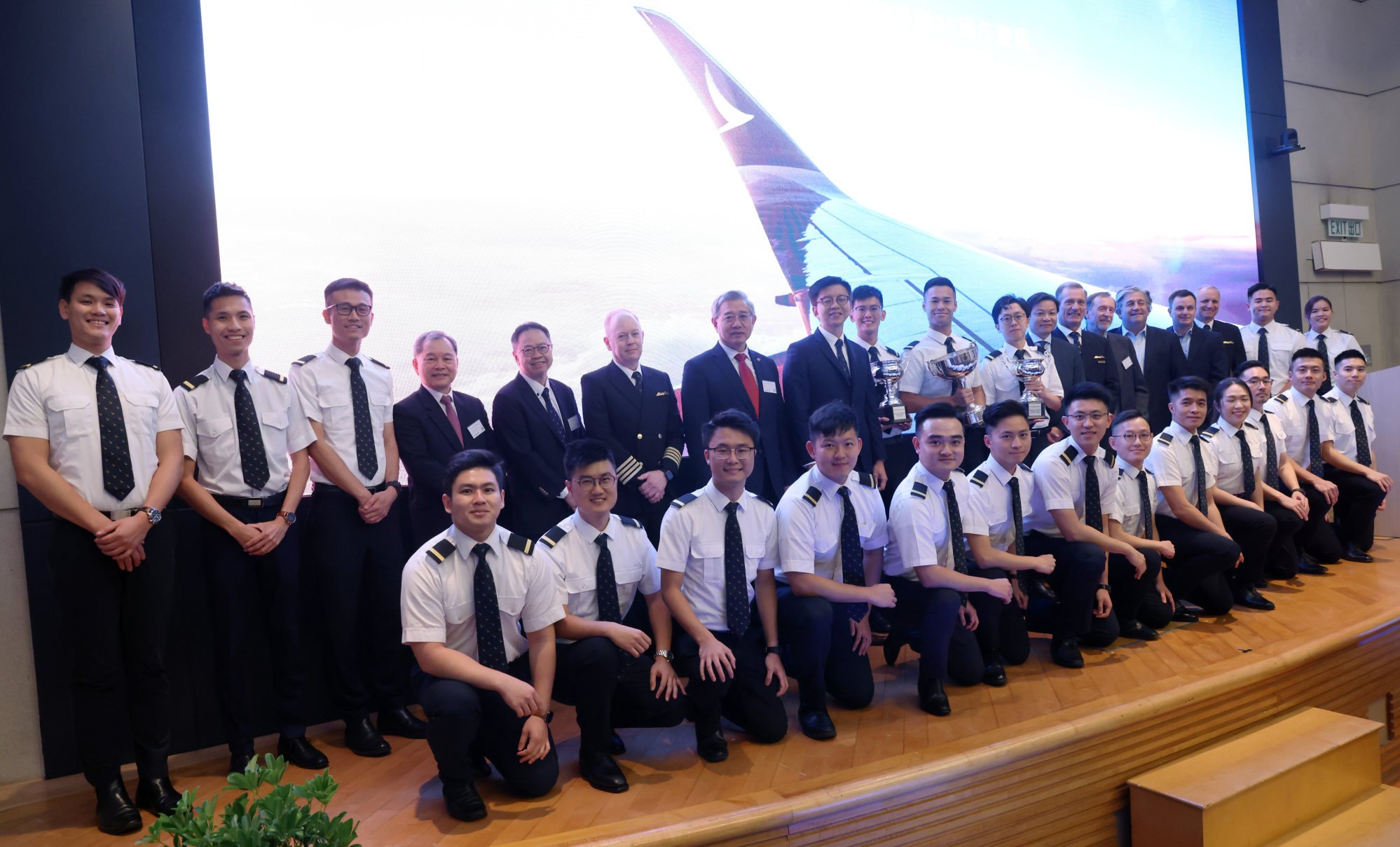First batch of Hong Kong Cathay Pacific pilots graduates from 75-week integrated training programme
“Why do all of our training outside when we have the expertise at the Hong Kong PolyU?” Kempis said, adding that institutions in the US and Australia continued to be important partners.
Running simultaneously with this new programme is the legacy cadet training programme, which is entirely conducted in Adelaide, Australia.

Attending the graduation ceremony, acting secretary for transport and logistics Liu Chun-san said this alternative mode of training could help attract new blood to the industry.
“Promotion of the localisation of the aviation workforce is one of our major policy objectives,” he said. “Local airlines and education institutions have been playing an indispensable role in this.”
He added that Hong Kong was the designated international aviation hub in the national 14th five-year plan and the Greater Bay Area Outline Development Plan.
Hong Kong’s Cathay to offer 3.8% pay rise but pilots’ union far from happy
The 21 trainees, who joined Cathay Pacific as second officers in November, are among the 800 cadet pilots the carrier hopes to recruit in 2023 and 2024. The airline has trained about 1,000 cadet pilots since its legacy programme was launched 35 years ago.
“It’s definitely a challenge,” Captain Ron Chan, deputy chief pilot (Boeing) at Cathay Pacific’s Flight Operations Department, said when asked whether achieving 80 per cent of what the airline accomplished in the past 3½ decades in two years was realistic.
“As the airline expands, we are looking at ways to train our pilots more efficiently. Now we have more technology, and more tools to assist. Of course, there is a lot of work to be done, but it’s definitely achievable.”
Chan, who joined the carrier in 1999 after completing the training programme, also said they were “on target” as more than 400 cadet pilots had been recruited this year. There were multiple courses now as opposed to one per year when the cadet programme kicked off in 1988, he added.
Hong Kong’s Cathay tackles staff shortages, poor morale as it chases rivals
Looking ahead, Chan said he believed the integrated training model would allow more room for future development in local aviation training.
He added that the airline hoped to have a larger pool of candidates to choose from given the sudden need to enrol 800 cadet pilots, which was the reason behind the carrier starting to recruit from mainland China for the first time earlier this year.
The cadet training programmes are among a slew of measures the carrier has been continuously taking to restore its pre-pandemic passenger capacity.
In June, the Hong Kong Aircrew Officers Association suggested the airline needed 700 captains to reach its goal but Cathay Pacific hit back, saying about 250 crew members who previously left would rejoin.
The airline said it was planning to hire another 5,000 employees next year on top of this year’s 4,000, but did not reveal how many of them were pilots and cabin crew members.
Hong Kong’s Cathay banks on premium services in fight back to airline top flight
Separately, as the carrier reported a net profit of HK$4.3 billion (US$551 million) in the first half of 2023, it also aimed to buy back 50 per cent of HK$19.5 billion in preference shares acquired by the government as part of a HK$39 billion recapitalisation package extended in 2020 during the pandemic.
The company hoped to make the purchase by the end of the year, at a redemption price of HK$9.75 billion.
The rest would be bought back by the end of next July, subject to market conditions and its business operations at the relevant time.
The airline has also extended its suspension of flights between Hong Kong and Tel Aviv from December 31 to March 28 next year.